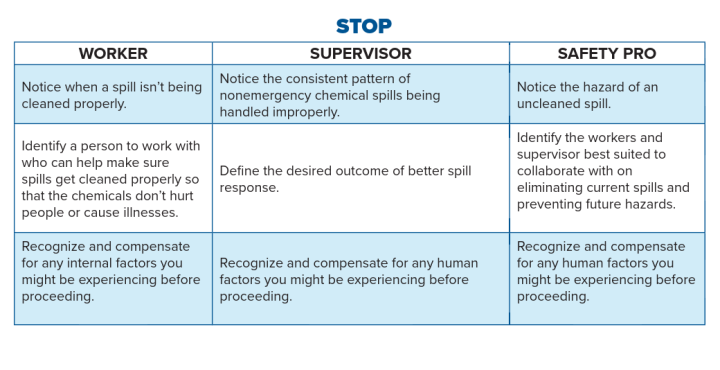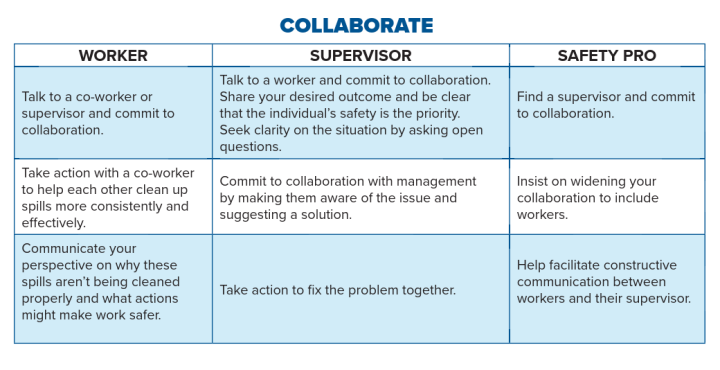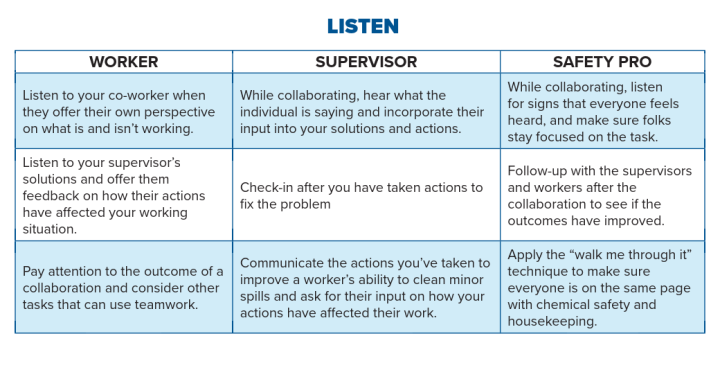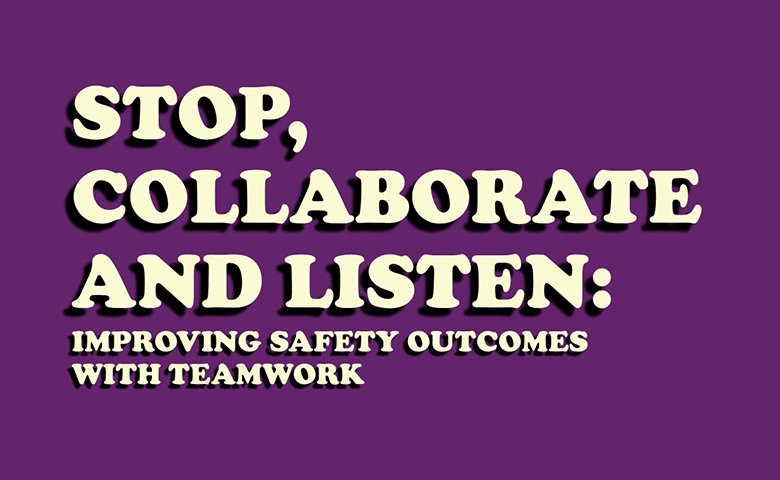If you found yourself anywhere near a radio in the ‘90s, chances are you’ve heard the opening line—Stop! Collaborate and Listen—to Vanilla Ice’s hip hop megahit, “Ice Ice Baby.” It’s not just a catchy way to start a song—it’s great safety advice, too. Collaboration is essential in making sure a workplace is keeping human factors in check, communicating clearly and aligning technical and people systems with reliable outcomes.
In a presentation at the Safety on the Edge conference (held March 26, 2025), safety thought leader Tim Page-Bottorff illustrates this three-step approach to teamwork by looking at the example of a non-emergency chemical spill. In workplaces that use hazardous chemicals, non-emergency spills can occur and need to be cleaned up properly. With the correct systems in place—like ventilation, PPE, and instructions and training on how to treat spilled chemicals—a workforce should theoretically have no trouble responding to a non-emergency chemical spill. But human factors like fatigue, rushing, frustration or complacency can contribute to the individual losing track of or ignoring systems that are in place to help mitigate the hazard. An individual might not have the information they need to make informed decisions on how to act. These issues can lead to folks taking shortcuts, making assumptions or even ignoring the hazard.
So when the spills aren’t being cleaned properly, it’s time to take a page out of the Vanilla Ice playbook. Here’s how:
STOP
When a worker, supervisor or safety professional notices something is out of tune, they should stop. Stopping allows you to assess the situation and head off unproductive responses like blaming someone. By stopping, workers have a chance to address their own internal factors and thoughts—so they can make sure they aren’t rushing or frustrated before they start to work with others for a more favorable outcome.
In the non-emergency chemical spill example, stopping can look like this for workers, supervisors and safety professionals:

COLLABORATE
After taking a moment to stop, it’s time to engage with someone who can help achieve a better outcome. Collaboration starts with a commitment: put the goal of safety first and understand that the best way to achieve that goal is by working together.
Here’s how that looks in our non-emergency chemical spill scenario:

LISTEN
A person’s commitment to collaboration needs to be maintained and that requires listening to teammates. A sustainable collaboration that supports a positive outcome is one in which people are listening to each other and adapting accordingly. Listening is how people can keep everyone synced up throughout an ongoing collaboration. Listening can also help supervisors gauge how successful a collaboration was after a task has been finished—listen for signs of people’s positive or negative experiences with the outcome. This can help improve future collaborative efforts.
Here is what that looks like for different roles in our non-emergency chemical spill example:

This three-step process—stopping, committing to collaboration and listening—can be transposed to any workplace scenario you face. And the best part is that other soft skills and culture-building leadership techniques can further enhance this method. So next time you face a challenge at work, remember that you’re not alone: just stop, collaborate and listen.

